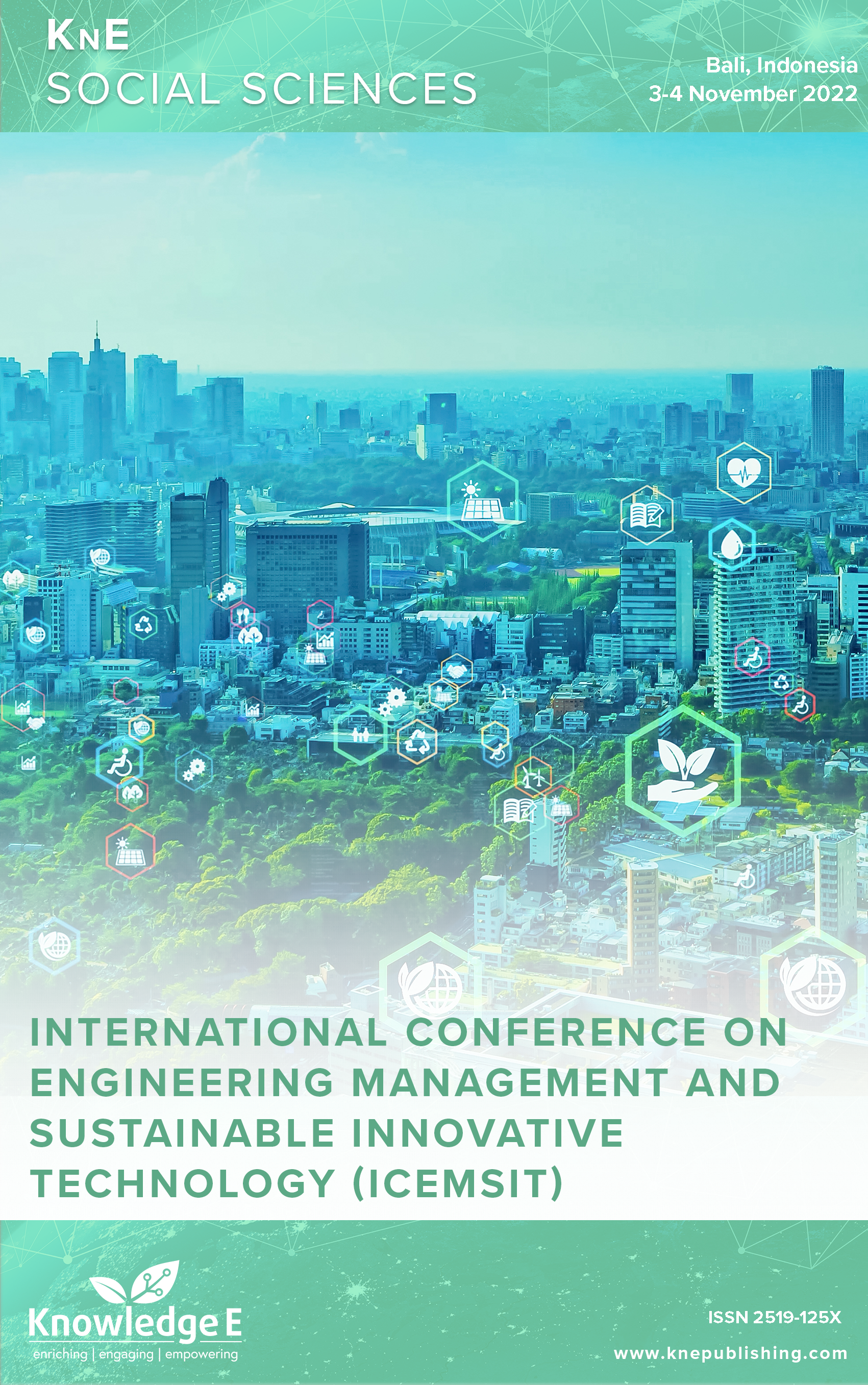IoT Board Education Design and Analysis for Elementary School Students
DOI:
https://doi.org/10.18502/kss.v9i10.15729Abstract
This study aimed to design and analyse IoT board education for elementary school students as a supporting tool for learning Programming Logic. The Programming Logic Learning curriculum was implemented in elementary schools to develop students’ critical thinking. The study used the waterfall method through the following phases: system analysis and requirements, design, development, testing, and implementation. In the performance system test, a trial was done for elementary school students, and a User Acceptance Test (UAT) was done for the Programming Logic subjects. The results of the Black Box Testing showed that all features could run well. Trials of several elementary school students showed that 80% of students were able to use it well and were interested in the IoT board education and UAT testing of The Guardian Teacher, which showed 100% suitability to the needs. In conclusion, the IoT Board Education System can be implemented in Elementary Schools to achieve Programming Logic purposes.
Keywords: IoT, programing logic learning, board education, needs analysis
References
Hwang J, Aziz A, Sung N, Ahmad A, Le Gall F, Song J. AUTOCON-IoT: automated and scalable online conformance testing for IoT applications. IEEE Access. 2020 Feb;8:43111–21. DOI: https://doi.org/10.1109/ACCESS.2020.2976718
Samaila MG, Sequeiros JB, Simoes T, Freire MM, Inacio PR. IoT-HarPSecA: a framework and roadmap for secure design and development of devices and applications in the IoT space. IEEE Access. 2020 Jan;8:16462–94. DOI: https://doi.org/10.1109/ACCESS.2020.2965925
Bhayo J, Hameed S, Shah SA. An efficient counter-based DDoS attack detection framework leveraging software defined IoT (SD-IoT). IEEE Access. 2020 Dec;8:221612–31. DOI: https://doi.org/10.1109/ACCESS.2020.3043082
Said O, Albagory Y, Nofal M, Al Raddady F. IoT-RTP and IoT-RTCP: adaptive protocols for multimedia transmission over internet of things environments. IEEE Access. 2017 Jul;5:16757–73. DOI: https://doi.org/10.1109/ACCESS.2017.2726902
Meqdad MN, Kadry S, Rauf HT. Improved dragonfly optimization algorithm for detecting IoT outlier sensors. Future Internet. 2022 Oct;14(10):297. DOI: https://doi.org/10.3390/fi14100297
Bagha H, Yavari A, Georgakopoulos D. Hybrid Sensing Platform for IoT-Based Precision Agriculture. Future Internet. 2022 Jul;14(8):233. DOI: https://doi.org/10.3390/fi14080233
Pappalardo M, Virdis A, Mingozzi E. Energy-Optimized Content Refreshing of Age-of- Information-Aware Edge Caches in IoT Systems. Future Internet. 2022 Jun;14(7):197. DOI: https://doi.org/10.3390/fi14070197
Agbo B, Al-Aqrabi H, Hill R, Alsboui T. Missing data imputation in the Internet of Things sensor networks. Future Internet. 2022 May;14(5):143. DOI: https://doi.org/10.3390/fi14050143
Wei L, Yang Y, Wu J, Long C, Lin YB. A Bidirectional Trust Model for Service Delegation in Social Internet of Things. Future Internet. 2022 Apr;14(5):135. DOI: https://doi.org/10.3390/fi14050135
Suduc AM, Bîzoi M, Gorghiu G. A Survey on IoT in Education. Romanian Journal for Multidimensional Education/Revista Romaneasca pentru Educatie Multidimensionala. 2018 Sep 1;10(3). https://doi.org/10.18662/rrem/66. DOI: https://doi.org/10.18662/rrem/66
Nurjanah S, Santoso HB, Hasibuan ZA. Modeling of Schools ICT Utilization: An Empirical Study in Indonesia. 2018 Third International Conference on Informatics and Computing (ICIC) 2018 Oct 17 (pp. 1-5). IEEE. DOI: https://doi.org/10.1109/IAC.2018.8780487
Chaiyasoonthorn W, Suksa-Ngiam W. Users’ Acceptance of Online Literature Databases in a Thai University: A Test of UTAUT2 [IJISSS]. Int J Inf Syst Serv Sector. 2018 Jan;10(1):54–70. DOI: https://doi.org/10.4018/IJISSS.2018010104
Nguyen DM, Huynh QT, Ha NH, Nguyen TH. Automated test input generation via model inference based on user story and acceptance criteria for mobile application development. Int J Softw Eng Knowl Eng. 2020 Mar;30(03):399–425. DOI: https://doi.org/10.1142/S0218194020500163
Losada B, López-Gil JM, Urretavizcaya M. Improving agile software development methods by means of user objectives: An end user guided acceptance test-driven development proposal. Proceedings of the XX International Conference on Human Computer Interaction 2019 Jun 25 (pp. 1-4). DOI: https://doi.org/10.1145/3335595.3335650
Islam AA, Sheikh A. A study of the determinants of postgraduate students’ satisfaction of using online research databases. J Inf Sci. 2020 Apr;46(2):273–87. DOI: https://doi.org/10.1177/0165551519834714
Antonelli L, Camilleri G, Torres D, Zarate P. AGUTER a platform for automated generation of user acceptance tests from requirements specifications. Kybernetes. 2023 Jan;52(1):44–63. DOI: https://doi.org/10.1108/K-04-2021-0252
Aminuddin R, Khan NA, Noor MH, Ismail I, Isa MA, Elias SS, et al. Istiqamah App: A Mobile Application for Sunnah and Hadith reminder using Flutter framework. 2022 IEEE 18th International Colloquium on Signal Processing & Applications (CSPA) 2022 May 12 (pp. 237-242). IEEE. https://doi.org/10.1109/CSPA55076.2022.9782052. DOI: https://doi.org/10.1109/CSPA55076.2022.9782052
Ghozali MT, Dewi PE. Trisnawati. Implementing the technology acceptance model to examine user acceptance of the asthma control test app. International Journal of System Assurance Engineering and Management. 2022 Mar;13 Suppl 1:742–50. DOI: https://doi.org/10.1007/s13198-021-01606-w
Lee S, Yoo S, Kim S, Kim E, Kang N. Effect of robo-taxi user experience on user acceptance: field test data analysis. Transp Res Rec. 2022 Feb;2676(2):350–66. DOI: https://doi.org/10.1177/03611981211041595
Pal D, Vanijja V. Perceived usability evaluation of Microsoft Teams as an online learning platform during COVID-19 using system usability scale and technology acceptance model in India. Child Youth Serv Rev. 2020 Dec;119:105535. DOI: https://doi.org/10.1016/j.childyouth.2020.105535

